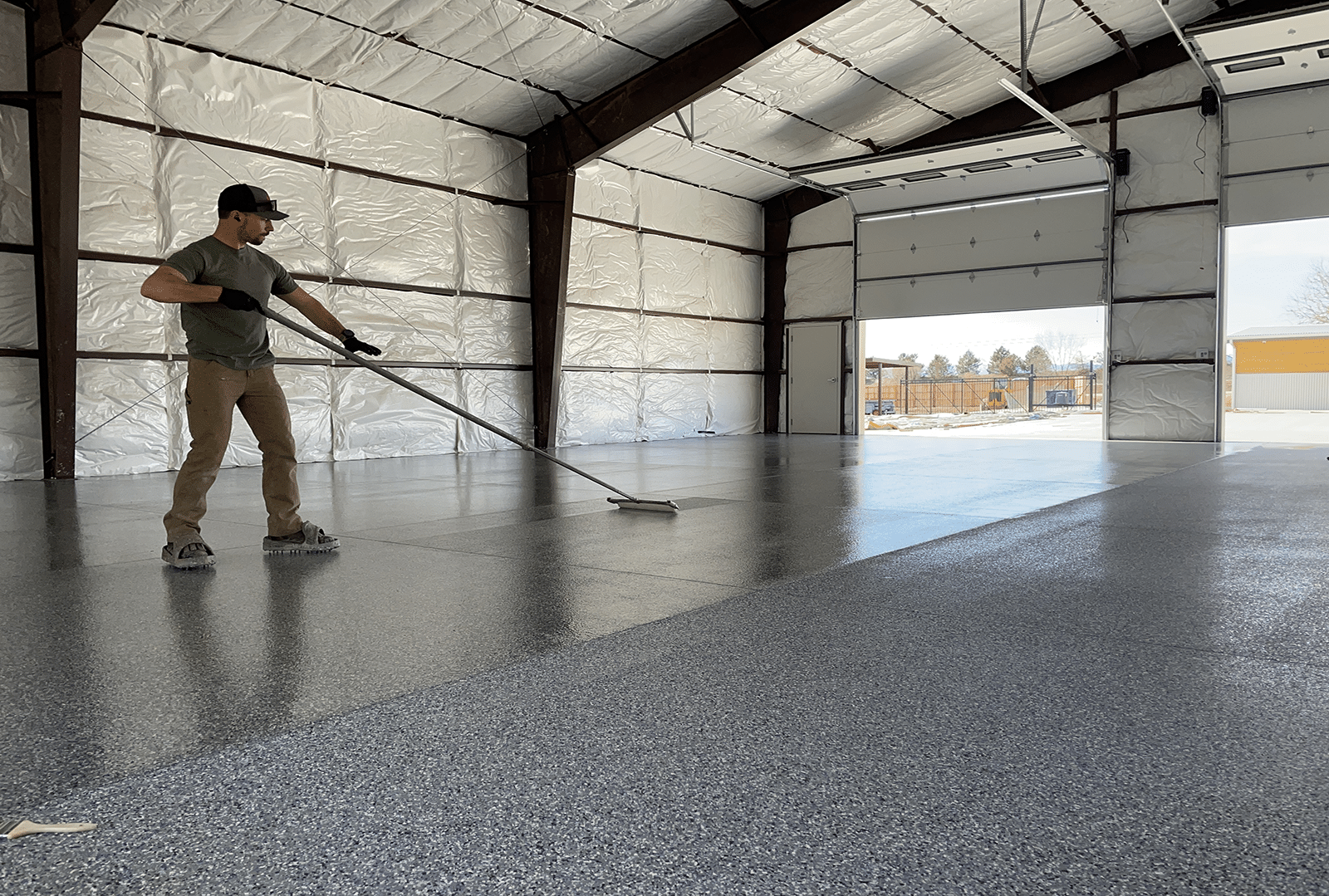5 Problems With Polyurea And Polyaspartic Concrete Floor Coatings
by Admin
Posted on 16-09-2023 12:46 PM

Though a polyurea polyaspartic flooring system does have its benefits, like all great things, there are factors that need to be considered. Many coating companies will try and tell you that polyurea polyaspartic coatings are the best and only system needed.
 This is not always the case depending on a variety of factors. One factor is that not all concrete cures the same. It differs across the nation and leads to variations in concrete porosity and moisture transmission. Polyurea polyaspartics are not the best systems to install over highly porous concrete with high moisture transmission. Why? because polyurea polyaspartics are not moisture mitigating! moisture transmitting through the concrete gets trapped under the coating and causes it to delaminate (peel).
This is not always the case depending on a variety of factors. One factor is that not all concrete cures the same. It differs across the nation and leads to variations in concrete porosity and moisture transmission. Polyurea polyaspartics are not the best systems to install over highly porous concrete with high moisture transmission. Why? because polyurea polyaspartics are not moisture mitigating! moisture transmitting through the concrete gets trapped under the coating and causes it to delaminate (peel).
Every so often you hear about some new wonder material that sounds too good to be true-and that's usually because it isn't true. Recently there has been a lot of talk about a miraculous new concrete floor coating and sealer called polyaspartic polyurea. This material, according to its proponents, can be applied at nearly any temperature, bonds easily to nearly any concrete surface, cures to full strength within half an hour, is flexible enough to bridge small cracks, can withstand high temperatures when cured, and has superior stain and uv resistance. So, you're asking, is all that really true? after talking to lots of people, both believers and skeptics, i believe that the simple answer is, yes, it is true-but.
Problem #1. Polyurea and polyaspartic coatings may not bond with your concrete
Print/save as pdf
you’ve heard about polyurea and polyaspartic concrete floor coatings and are wondering if this type of coating is what you’re looking for. Now, you’ve read all about the benefits of a polyurea and polyaspartic coating.
 They’re durable, impact-resistant, resistant to high temperatures, long-lasting. The list goes on and on. However, like any product, polyurea coatings come with their issues. And when you’re considering investing in this coating, you want to know what potential problems you might run into before, during, or after the coating is applied. Southwest exteriors has been an exterior remodeling contractor in san antonio since 1989, and we’ve been installing polyurea and polyaspartic concrete coatings over the past several years.
They’re durable, impact-resistant, resistant to high temperatures, long-lasting. The list goes on and on. However, like any product, polyurea coatings come with their issues. And when you’re considering investing in this coating, you want to know what potential problems you might run into before, during, or after the coating is applied. Southwest exteriors has been an exterior remodeling contractor in san antonio since 1989, and we’ve been installing polyurea and polyaspartic concrete coatings over the past several years.
Before and after: polyurea and polyaspartic floor coatings are similar subtypes of polyurethane, but not all coatings are created equal. Polyurea dries quickly and is more susceptible to uv damage and install errors. Polyurea is a similar material to epoxy and polyaspartic. It is a combination of synthetic resin and isocyanate-reactive materials. Polyurea is considered a subtype of polyurethane and creates a durable seal to coat garage floors. It's a flexible, synthetic material and some types of polyurea are uv resistant which prevents them from yellowing over time. Polyurea can be difficult to work with due to its quick drying time.
Problem #5. Polyurea and polyaspartic coatings can fade over time
Polyaspartic floor coatings that contain aliphatic isocyanates and their derivatives have a high resistance to light and uv damage, which means they won’t fade or yellow over time when regularly exposed to the sun—a marked improvement over both epoxy and polyurea coatings. This makes polyaspartic coatings extremely well-suited to use in outdoor spaces or in buildings with large atriums/skylights.
our editors and experts handpick every product we feature. We may earn a commission from your purchases. Many homeowners use garage space as an extension of their indoor living space ; the garage is a workshop, laundry room or recreation area. An uncoated concrete floor is an unattractive option if you spend significant time in your garage. Coat the floor and you increase its durability, make it easier to clean and improve the look, as well as a home’s resale value. Epoxy is an increasingly popular floor-coating method for garages nationwide. It’s a diy option, though a plethora of coating professionals are available for affordable installation.
Polyaspartic flooring is a high-performance system with superior durability and strength. Seriously, check out our flooring; it’s stronger than epoxy. It is an advanced two-component, polymer-based coating system applied in a single layer. Polyaspartic flooring systems are resistant to things like: chemicals uv exposure they also offer excellent color retention, so they look great for years. In addition to being tough, the coating offers slip resistance and low voc emissions for a safer environment. Moreover, with minimal preparation, you can apply this type of flooring over concrete or other substrates such as steel or wood. The bottom line is that polyaspartic coatings provide an incredibly durable surface.